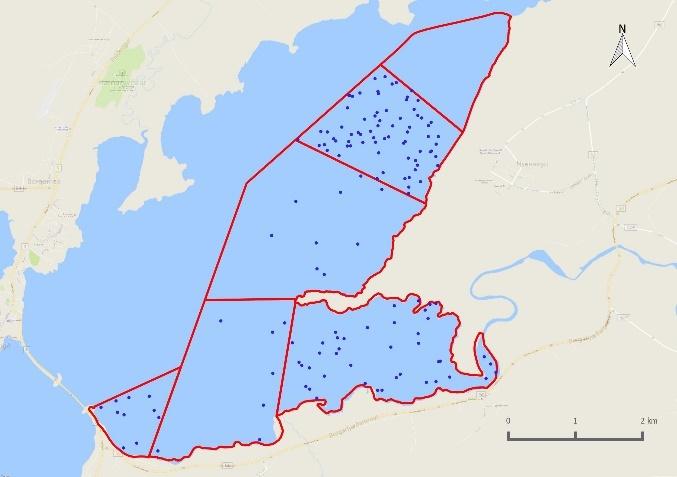
2 minute read
Black-headed Gull
Black-headed Gull
Chroicocephalus ridibundus Hettumáfur
Black-headed Gulls were recorded in low numbers (< 100 birds) in the survey area during late March, April and May, and were absent in June. Numbers gradually increased throughout July and August. Peaks of 626 and 778 were recorded on 7th August and 6th September, respectively, and then numbers declined during September and October. There were clear differences in distribution within the survey area between low tide and rising tide surveys. The birds showed a preference for the more southerly subsites during low tides, and exploited all subsites except Kistuhöfðahólmar (Est 3) during rising tides. During spring, the birds were mostly distributed in the three southernmost subsites (Flæðhöfðasker (Est 6), Grjóteyrarklakkur (Est 1) and Kistufjörđur (Est 2)). In the autumn, they were more widely distributed and were recorded throughout the survey area. Birds were most often foraging during low tides and roosting during rising tides.
Number of individuals 1000 800 600 400 200 0 Low-tide Rising-tide
10 11 12 13 14 15 16 17 18 19 20 21 22 23 24 25 26 27 28 29 30 31 32 33 34 35 36 37 38 39 40 41 42 43 Mar Apr May Jun Jul Aug Sep Oct Week number and month
Figure 3-103. Number of Chroicocephalus ridibundus recorded during weekly low tide and rising tide estuarine surveys in the Andakíll Ramsar site between 12th March and 25th October 2017.
(a) Low tide (b) Rising tide

Figure 3-104. Relative abundance of Chroicocephalus ridibundus during weekly (a) low tide and (b) rising tide estuarine surveys in the Andakíll Ramsar site between 12th March and 25th October 2017. Dots are randomly positioned within each subsite. While each dot refers to a single bird, it refers to the bird’s presence in that subsite only, and not the bird’s actual location.

(a) Spring (b) Autumn

Figure 3-105. Relative abundance during (a) spring and (b) autumn of Chroicocephalus ridibundus counted on twice-weekly estuarine surveys in the Andakíll Ramsar site in 2017. Spring = 12th March - 7th June; Autumn = 12th June - 25th October. The number of dots in each subsite refers to the total number of bird-records (from weekly low tide and rising tide surveys) in spring and autumn, adjusted for the length of the season, and reflects the species’ abundance in that season, not the specific location of birds.

(a) Low tide (b) Rising tide

Figure 3-106. Proportion of foraging and roosting Chroicocephalus ridibundus during weekly (a) low tide and (b) rising tide estuarine surveys in six subsites in the Andakíll Ramsar site between 12th March and

25th October 2017.










